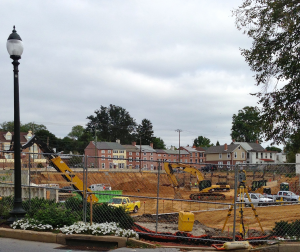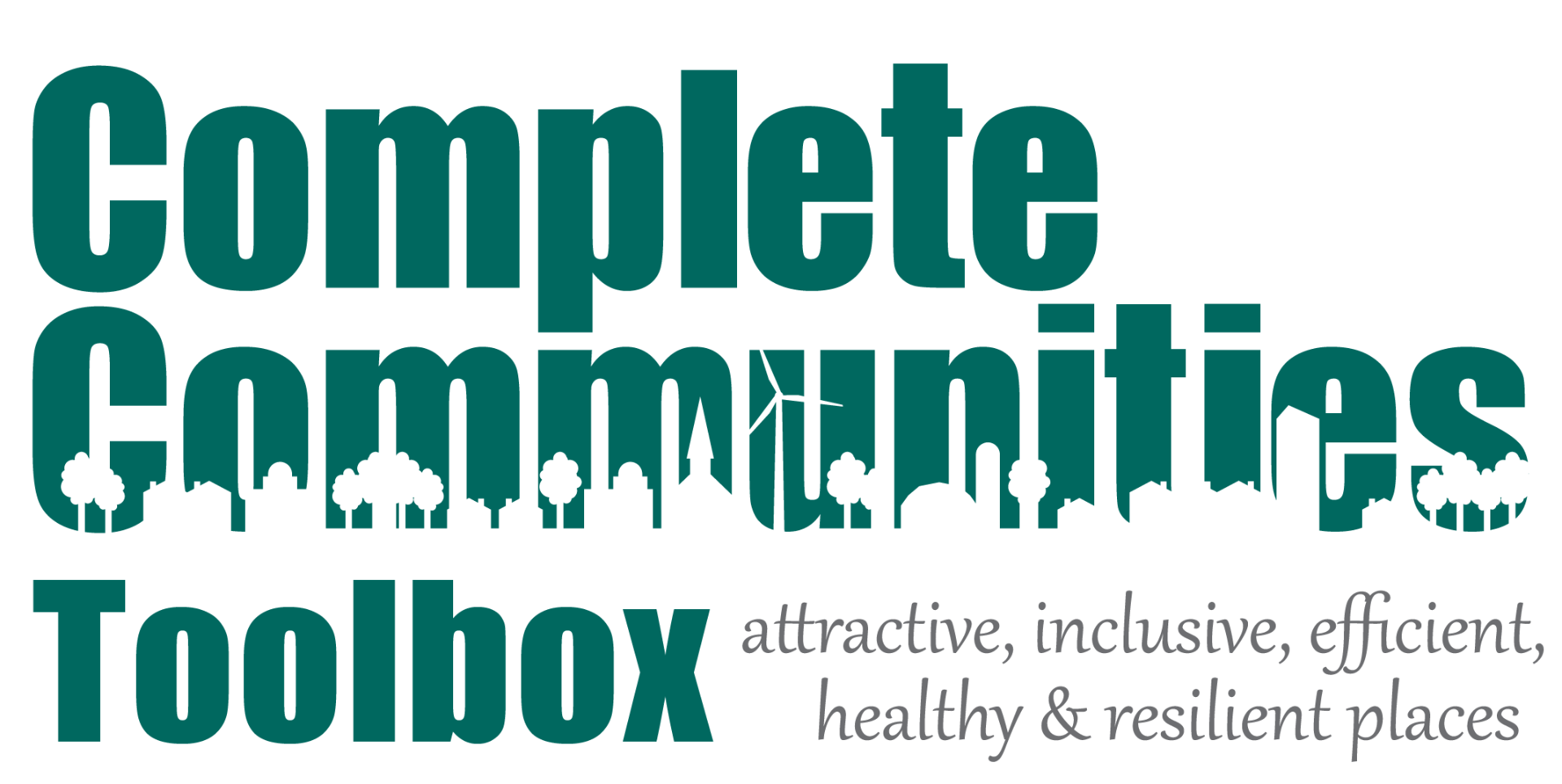Economic development can be described as a program, set of policies, or activities that seek to build capacity for self-sustaining, long-term economic growth. While state governments and local non-profit economic development agencies/organizations often take the lead in developing economic development programs, local governments in Delaware can play a major role to plan for economic development that bolster jobs, the local tax base, environmental sustainability, social equity, and a good quality of life.
This section of the Toolbox is designed to help local officials within the state better understand what strategies and tools are available to advance economic development in their respective jurisdiction. Topics include:
- What is Economic Development?
- Strengthen the Economic Development Element within a Comprehensive Plan
- Community-Specific Economic Development Strategies
- Preservation-Based Economic Development
What is Economic Development?
Economic development is a term used to describe concerted actions taken for the purpose of economic progress within a specific area. It is the process of generating and sustaining wealth in a community. Every community has unique assets that can be used to attract employers and investment. Building on these assets is one of the best ways communities can stimulate their economies.
The Complete Communities philosophy facilitates economic development because it provides a planning framework for communities to build upon existing plans and leverage local assets to improve the quality of life to residents. When local governments implement the elements of Complete Communities, they bring together many factors that combine to create places that are enjoyable to live, work, and play. Being located in an area that boasts a high quality of life gives businesses the opportunity to attract and retain talented employees.
The Complete Communities philosophy also advocates for a proactive approach to planning for economic development. One of the first steps towards implementing a successful economic development initiative is public engagement. Engaging and gaining input from stakeholders gives local government leaders the necessary perspective to formulate plans that will best serve the needs of businesses and community members. Local government stakeholders can articulate a vision for the future during the comprehensive plan process, or a separate consensus-building process like a charrette. The comprehensive plan can set forth a vision and goals that provide a blueprint for growth, development, and efficient land use to spur meaningful economic growth. The right balance of complimentary land uses can attract investment in areas intended for growth and development, consistent with the Delaware Strategies for State Policies and Spending. It is essential to coordinate land-use decision-making with the provision of infrastructure and services that support business investment and market-ready (re)development. Local governments should foster a supportive regulatory environment that is streamlined and business friendly. The adoption of form-based codes that use pictures and diagrams to convey the types of (re)development, parking, buildings, streets, and open space that is consistent with the local vision. All of these measures prepare communities for economic growth.
All levels of government play a role in putting forth policies that foster economic development. Intergovernmental cooperation and interaction among businesses, community organizations, civic leaders, and residents is a key to envisioning and building a better economy. When communities build on unique assets and plan for growth, the benefits build on one another. Local governments can play a major role in planning for economic development. A 2014 Economic Development Survey conducted by the International City/County Management Association (ICMA) highlights what local governments throughout the nation are doing to spur private investment and job creation.
Strengthen the Economic Development Element within a Comprehensive Plan
A comprehensive plan serves as a policy document that provides a blueprint for future land use and development. Comprehensive plans are the most powerful tool that local governments can use to direct future land use and development. State law (22 Delaware Code §702) requires Delaware municipal governments to develop and regularly update comprehensive plans to “[encourage] the most appropriate uses of physical and fiscal resources of the municipality and the coordination of municipal growth, development, and infrastructure investment actions with those of other municipalities, counties and the State.”
to direct future land use and development. State law (22 Delaware Code §702) requires Delaware municipal governments to develop and regularly update comprehensive plans to “[encourage] the most appropriate uses of physical and fiscal resources of the municipality and the coordination of municipal growth, development, and infrastructure investment actions with those of other municipalities, counties and the State.”
Economic development may be discussed within a specific element (i.e., section), of a comprehensive plan, or within several elements. First and foremost, a community vision for economic development should be developed through a public engagement process, which involves a diverse group of citizens and stakeholders, to articulate community values and preferences for growth and development. Visioning “what a community wants to be when it grows up,” can be achieved through a SWOT analysis where stakeholders assess the Strengths, Weaknesses, Opportunities, and Threats for economic development success. Community Asset Mapping is another strategy that can engage stakeholders in developing an economic development vision.
Delaware’s Office of State Planning Coordination (OSPC) has prepared Municipal Planning Checklists to help municipal governments meet the requirements of state laws regarding planning. Delaware municipalities are required to analyze the redevelopment potential for their communities within their comprehensive plan. It is strongly suggested that the analysis include an inventory of areas within the community in need of revitalization or redevelopment. State law requires that the redevelopment potential analysis provide a redevelopment strategy that includes “a set of policies, statements, goals, and planning components to encourage and enable the redevelopment and revitalization of [identified] areas.”
The section that analyzes the redevelopment potential of a community can be further expanded into a broader economic development element. In addition to the suggested and required components of the analysis, the economic development element can set forth a comprehensive strategy, action steps, required resources, and identify/describe roles and responsibilities of essential partners to achieve desired outcomes. Within this element, a local government should clearly define what it can and will do to support existing business growth and attract new business investment. The economic development element should also provide sufficient guidance to develop laws, policies, and programs to achieve implementation, including sometimes a master plan and/or a capital improvement program.
Wisconsin Economic Development Institute has published A Guide to Preparing the Economic Development Element of a Comprehensive Plan. While this guide specifically references Wisconsin’s land-use planning law and its requirement for comprehensive plans to contain an economic development element, it offers general guidance on the economic development process that is relevant to all local governments. It suggests that the economic development element within a comprehensive plan:
- Be current and relevant
- Have clearly defined, shared goals
- Be consistent with and build upon other local, regional, and state plans
- Reflect current market conditions
- Be crafted as a result of public involvement and a collaborative environment that actively involves all community stakeholders
- Define a detailed strategy
- Define measures of success
Community-Specific Economic Development Strategies
In addition to strengthening the economic development element within a comprehensive plan, a local government can develop a specific plan that may be adopted separately, or as an addendum to a comprehensive plan. Examples of community-specific plans include economic development plans/strategies, downtown development district plans, revitalization strategies, infill development plans, and capital improvement programs. If an economic development plan/strategy is prepared, it should adhere to previously described planning principles. The plan/strategy should consist of a compilation of objectives, policies, goals, maps, and programs to guide future economic goals and take measurable steps to achieve them.
Several Delaware local governments and organizations have prepared and adopted economic development plans/strategies.
- City of Milford’s Economic Development Strategy
- City of Newark Economic Development Strategy and Action Plan
- City of Wilmington and New Castle County joint Economic Development Strategic Plan
- Sussex Economic Development Action Committee
Preservation-Based Economic Development
The National Main Street Center uses a preservation-based economic development approach to economic development. The Main Street Four Point Approach®–organization, promotion, design, and economic restructuring—serves as the foundation for local initiatives to revitalize their districts by leveraging local assets.

